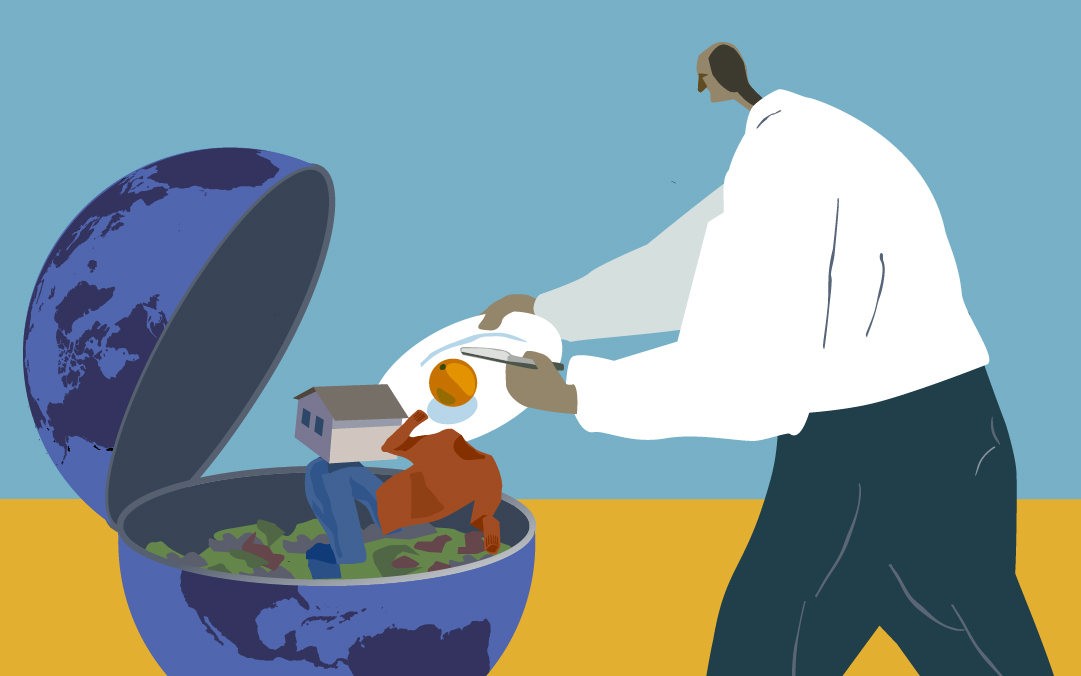People often think of design as a purely visual engagement. But it goes deeper than that and isn’t limited to those in the design field. Design (and design thinking) is a process to solve problems in a creative and innovative way.
I bring this up because of an article I recently read in the March 2020 issue of National Geographic magazine. The article is about innovative people from all different industries and disciplines who are developing creative solutions to help save the planet by using or reusing resources instead of discarding or even recycling them.
Every year 100 billion tons of raw materials are grown, mined or procured and transformed into products. Eventually these products are discarded or recycled. It’s mostly a linear process. Less than 25 percent of these materials are used to create long-lasting things like buildings, construction materials, or cars. The vast majority of materials (67.4 billion tons) are used for products with a relatively short shelf life. Almost all of the materials are disposed as waste, end up as some form of pollution, or otherwise scattered. Less than 10 percent cycles back into the economy.
Taking their inspiration from nature’s circular lifecycle, there is a movement afoot to create a circular economy designed to dramatically decrease the amount of pollution and waste by reusing materials.
Here are just a few examples:
Food
Imagine being able to produce year-round indoors, anywhere — with less resources needed to grow them and less resulting pollutants. That’s exactly what they’re doing in a warehouse-looking structure in Newark, New Jersey. Leafy greens are grown in a reusable substrate made from recycled plastic bottles across rows and rows of shelves. Water is misted directly onto roots, saving 95 percent of the water needed outdoors. No pesticides are necessary, and fertilizers are applied only as needed. The lighting is designed to provide the specific wavelength that the greens require. The yields are almost 400 times as high as farming in fields.
Developing better ways to grow our food is only part of the solution. Reducing the amount wasted food is another important issue. Roughly one-third of food grown globally is currently wasted. And it’s not only the amount of food wasted that has an effect on our planet— think of the cost and environmental impact of all the resources used in the process: fertilizers, pesticides, water, fuel, processing and packaging, etc.
Part of the problem with reducing food waste is making people feel like they can realistically make a dent in this global problem. But what if we could think of it in more personal terms? Well, we can. We all know how much groceries cost. If we throw out one bag of groceries for every three bags we buy, how much is that costing us in real dollars? That’s the idea behind the smart garbage can.
Each time food is dumped into the smart garbage can, a scale measures the added weight and snaps a picture. The software then identifies the new garbage and displays the cost. The idea, as one of the inventors put it, is that “when you start measuring the problem, you start managing it.” This could be useful to the average household, but imagine how much more accurately restaurants and hotels can use the data to manage how much food they prepare — particularly for buffets. One major hotel chain is already doing it and has been able to cut food waste in half as a result.
Clothing
From 2000-2015, the world population increased by 20% but at the same time, the amount of clothes purchased doubled. Part of the reason was the availability of less expensive clothes which, because of their lower cost, were worn on average a third fewer times before being discarded. In 2015 alone $450 billion worth of clothing was thrown out. But now innovating companies are looking at ways to reuse or recycle clothes. One solution has been to rent clothes, which allows people to maintain a diverse wardrobe while extending the life of each garment. Other companies buy used wool clothing, and then sort, wash and shred before spinning it back into yarn.
Shelter
Innovators have also been thinking outside the box when it comes to buildings. For example, outside of Amsterdam, there’s an office park being developed (it’s currently about 75 percent complete) where creative solutions have been designed to greatly reduce its carbon footprint and use of resource. Energy is all renewable. Wastewater is treated and recycled on-site. Less noticable, but no less dramatic is that the buildings are built to use less materials. For example, instead of concrete slab floors, the buildings use thinner, hollow, steel-beamed floors. This allows seven stories to fit in the usual height of six, reducing the amount of materials needed (approximately 30 percent less) — but also requiring less energy to heat and cool them. Additionally, warm water from the neighboring canal, stored underground from the summer, flows through the pipes in winter, heating the space above. The reverse happens in summer — cool canal water from the winter flows through the pipes cooling the floor below. And unlike buildings made using concrete slabs, the prefabricated floor/ceiling sections can be disassembled and reused, should the building need to be reconfigured or demolished.
It’s going to take more thinking like this, and developing a circular economy based on reusing our precious resources will require an enormous cultural shift, but as these examples indicate, almost anything is possible if we put our minds to it.
